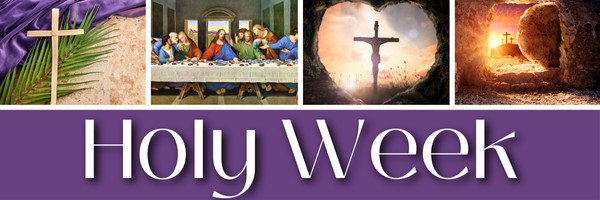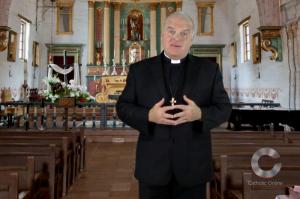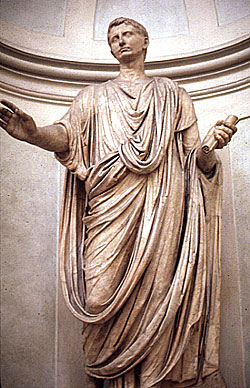We ask you, urgently: don't scroll past this
Dear readers, Catholic Online was de-platformed by Shopify for our pro-life beliefs. They shut down our Catholic Online, Catholic Online School, Prayer Candles, and Catholic Online Learning Resources essential faith tools serving over 1.4 million students and millions of families worldwide. Our founders, now in their 70's, just gave their entire life savings to protect this mission. But fewer than 2% of readers donate. If everyone gave just $5, the cost of a coffee, we could rebuild stronger and keep Catholic education free for all. Stand with us in faith. Thank you.Help Now >
Universe, you really let me down: astronomers disappointed after observation doesn't fit model
FREE Catholic Classes
Two professors say they are disappointed with the universe after learning that it is "smoother" and "flatter" than they expected. The compared the discovery to a trip to Switzerland that was switched for a trip to the Netherlands.
Highlights
Catholic Online (https://www.catholic.org)
4/7/2014 (1 decade ago)
Published in Technology
Keywords: astronomers, model, universe, clusters
LOS ANGELES, CA (Catholic Online) - Instead of majestic soaring alpine peaks, two astronomers say the universe resembles more the countryside of the Netherlands. The British astronomers compared recent observations of the cosmic background radiation to the number of galaxy clusters in the universe. Their study shows that the leading model of how the universe is formed does not match what is actually observed, specifically, there should be more galaxy clusters in the universe.
Astronomers agree that the universe was formed over 13.7 billion years ago in an event known as the Big Bang. This cosmic explosion, which represents the instant in which the universe was created, still echoes in the form of the cosmic background radiation, a faint afterglow of the Big Bang. This afterglow is uniformly seen no matter where astronomers look.
From that epic event, matter clumped together, forming stars, then galaxies, and galaxies formed into clusters of galaxies.
Based on the models that are used to describe the events following the Big Bang, we expect to see a large number of galaxy clusters throughout the known universe. However, the number of clusters we can actually observe is lower than what the model predicts, by a factor of at least two.
That discrepancy was discovered by Astronomy professor Chris Collins and Dr. Ian McCarthy from Liverpool's John Moores University. Professor Collins used an analogy to convey his disappointment:
"Have you ever booked a holiday to Switzerland expecting to trek the Alpine mountain ranges only to be disappointed by ending up walking the flat countryside of Holland? Similar disappointment was felt when Dr. McCarthy and I conducted an experiment to measure the number of large massive clumps in the Universe, called clusters of galaxies."
He continued, "Science is at its most interesting when prediction and experiment disagree and so although our cosmic landscape is smoother than we thought, this may mean we need to re-think bits of our cosmological theory and such progress is good for science in the long run."
"Although the perceived wisdom was that we would find lots of big clusters, in fact, when we looked, the Universe did not live up to our expectation and we found far fewer of these really huge structures than expected."
So what does this mean?
It means that either the professors made a mistake in their work, that we cannot identify all of the clusters that are out there and we may be missing some, or it means that the models used to describe the formation of the universe are incomplete.
Which is correct will require the work of other scientists who will analyze their methods and repeat their tests. If Collins and McCarthy are correct then cosmologists will need to account for the discrepancy and either locate the missing factor or revise their models.
If nothing else, this shows the self-correcting power of science. Mistakes can be made, however they are also corrected over time and each new discovery adds to our body of knowledge. We still have a great many questions about our physical universe, but as long as we wonder, we will continue to find new answers that will excite us and drive at the very core of our being.
---
'Help Give every Student and Teacher FREE resources for a world-class Moral Catholic Education'
Copyright 2021 - Distributed by Catholic Online
Join the Movement
When you sign up below, you don't just join an email list - you're joining an entire movement for Free world class Catholic education.

-

- Stations of the Cross
- Easter / Lent
- 5 Lenten Prayers
- Ash Wednesday
- Living Lent
- 7 Morning Prayers
- Mysteries of the Rosary
- Litany of the Bl. Virgin Mary
- Popular Saints
- Popular Prayers
- Female Saints
- Saint Feast Days by Month
- Pray the Rosary
The Way of the Cross: A Good Friday Reflection on Christ’s Final Journey
The Many Reasons Why We Call it Good Friday
“It Is Finished”: The Silence of Good Friday and the Triumph of the Cross
Daily Catholic
 Daily Readings for Saturday, April 19, 2025
Daily Readings for Saturday, April 19, 2025 St. Alphege: Saint of the Day for Saturday, April 19, 2025
St. Alphege: Saint of the Day for Saturday, April 19, 2025 Stewardship Prayer: Prayer of the Day for Saturday, April 19, 2025
Stewardship Prayer: Prayer of the Day for Saturday, April 19, 2025 Daily Readings for Friday, April 18, 2025
Daily Readings for Friday, April 18, 2025 St. Apollonius the Apologist: Saint of the Day for Friday, April 18, 2025
St. Apollonius the Apologist: Saint of the Day for Friday, April 18, 2025- Aspiration: Prayer of the Day for Friday, April 18, 2025
![]()
Copyright 2025 Catholic Online. All materials contained on this site, whether written, audible or visual are the exclusive property of Catholic Online and are protected under U.S. and International copyright laws, © Copyright 2025 Catholic Online. Any unauthorized use, without prior written consent of Catholic Online is strictly forbidden and prohibited.
Catholic Online is a Project of Your Catholic Voice Foundation, a Not-for-Profit Corporation. Your Catholic Voice Foundation has been granted a recognition of tax exemption under Section 501(c)(3) of the Internal Revenue Code. Federal Tax Identification Number: 81-0596847. Your gift is tax-deductible as allowed by law.


 Daily Readings for Saturday, April 19, 2025
Daily Readings for Saturday, April 19, 2025 St. Alphege: Saint of the Day for Saturday, April 19, 2025
St. Alphege: Saint of the Day for Saturday, April 19, 2025 Stewardship Prayer: Prayer of the Day for Saturday, April 19, 2025
Stewardship Prayer: Prayer of the Day for Saturday, April 19, 2025 St. Apollonius the Apologist: Saint of the Day for Friday, April 18, 2025
St. Apollonius the Apologist: Saint of the Day for Friday, April 18, 2025


